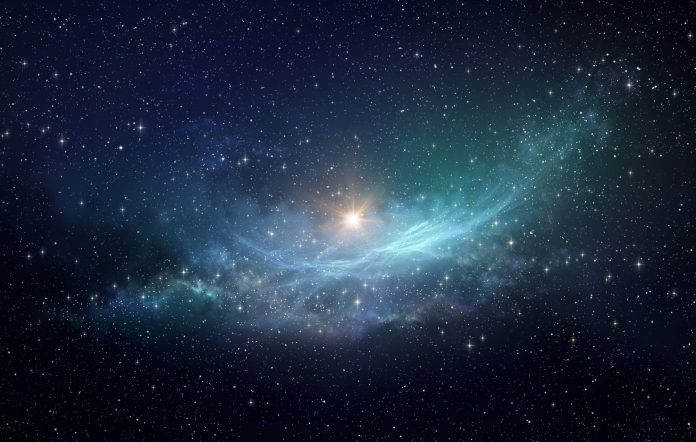
This discovery challenges previous assumptions about massive Be stars, suggesting they might exist in triple-star systems rather than just double stars.
The research conducted by PhD student Jonathan Dodd and Professor René Oudmaijer from the School of Physics and Astronomy opens up exciting avenues for further exploration and investigation in astrophysics. It showcases the dynamic nature of scientific inquiry as established beliefs are challenged, and new possibilities emerge, contributing to our evolving comprehension of the vast and complex universe.
Understanding ‘Be Stars’
This discovery can redefine our understanding of a subset of B stars known as Be stars. These stars, regarded as a crucial “test bed” for refining theories on stellar evolution, exhibit a distinctive gas disc around them, similar to Saturn’s rings in our own Solar System.
Despite their identification by the renowned Italian astronomer Angelo Secchi in 1866, the formation mechanism of these Be stars and their surrounding discs has remained a mystery until now.
Challenging assumptions
Astronomers have posited that the rapid rotation of Be stars leads to the formation of these discs, with such rotation potentially induced by interactions within binary star systems. However, this new research challenges this consensus, suggesting that massive Be stars might exist in triple-star systems rather than just binary arrangements.
This revelation offers fresh insights into the origin of Be stars. It has broader implications for advancing our understanding of stellar evolution, utilising these enigmatic objects as a valuable testing ground for evolving theories in astrophysics.
Mr Dodd, corresponding author of the research, said: “The best point of reference for that is if you’ve watched Star Wars, there are planets where they have two Suns.”
“The best point of reference for that is if you’ve watched Star Wars, there are planets where they have two Suns.”
Gaia satellite analysis
Through a meticulous analysis of data from the European Space Agency’s Gaia satellite, the researchers have identified compelling evidence indicating that these massive Be stars exist within triple star systems.
This suggests a departure from the previously held notion of these stars predominantly residing in binary systems with only two interacting bodies. The revelation of a triadic arrangement introduces a new dimension to our understanding of these celestial entities, highlighting the complex dynamics within these triple systems rather than the simpler binary configurations originally presumed.
Mr Dodd added: “We observed the way the stars move across the night sky, over longer periods like 10 years, and shorter periods of around six months.
“We applied this across the two groups of stars that we are looking at — the B stars and the Be stars — and what we found, confusingly, is that at first, it looks like the Be stars have a lower rate of companions than the B stars.”
However, Principal Investigator Prof Oudmaijer said: “The fact that we do not see them might be because they are now too faint to be detected.”
Invisible companions
The scientists turned their attention to a distinct dataset, examining companion stars at greater distances. Their findings revealed a similarity in the frequency of companion stars associated with B and Be stars in these more extensive separations.
Drawing from this observation, the researchers deduced that, in numerous instances, a third star appears to be a contributing factor. This third stellar presence influences the proximity of the companion star to the Be star, bringing them close enough for a transfer of mass between the two.
This mass transfer process is believed to be instrumental in forming the distinct disc characteristic of Be stars. Identifying this triadic stellar interaction sheds new light on the mechanisms shaping the properties of Be stars, challenging earlier assumptions and deepening our comprehension of their intricate evolutionary processes.
Broader astrophysical implications
This newfound insight might elucidate the reason behind the apparent absence of these companions from observation. It is postulated that these companions may have diminished in size and luminosity, making them challenging to detect after substantial mass transfer to the “vampire” Be star.
The implications of this discovery extend beyond Be stars, potentially reshaping our comprehension of astronomical phenomena. Its influence could extend to our understanding of black holes, neutron stars, and sources of gravitational waves, presenting a paradigm shift in how we interpret and study these cosmic entities.
The ripple effects of this revelation have the potential to reach far and wide, prompting a reevaluation of existing astronomical theories and opening up new avenues for exploration and discovery in the broader field of astrophysics.
